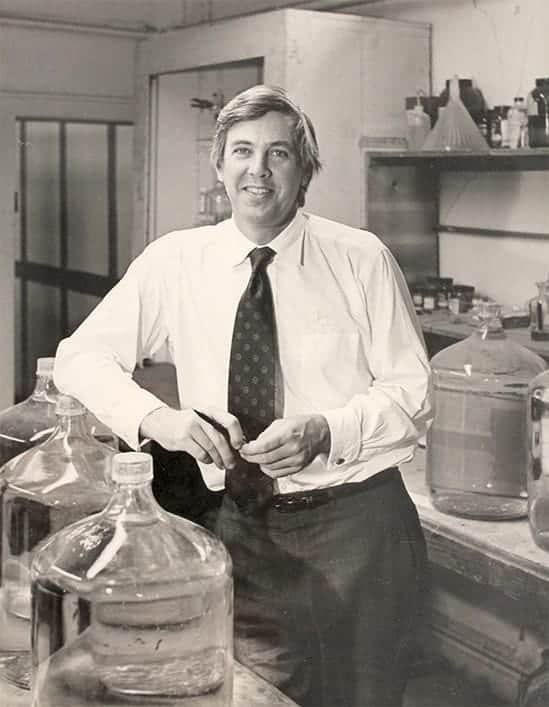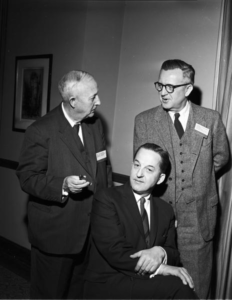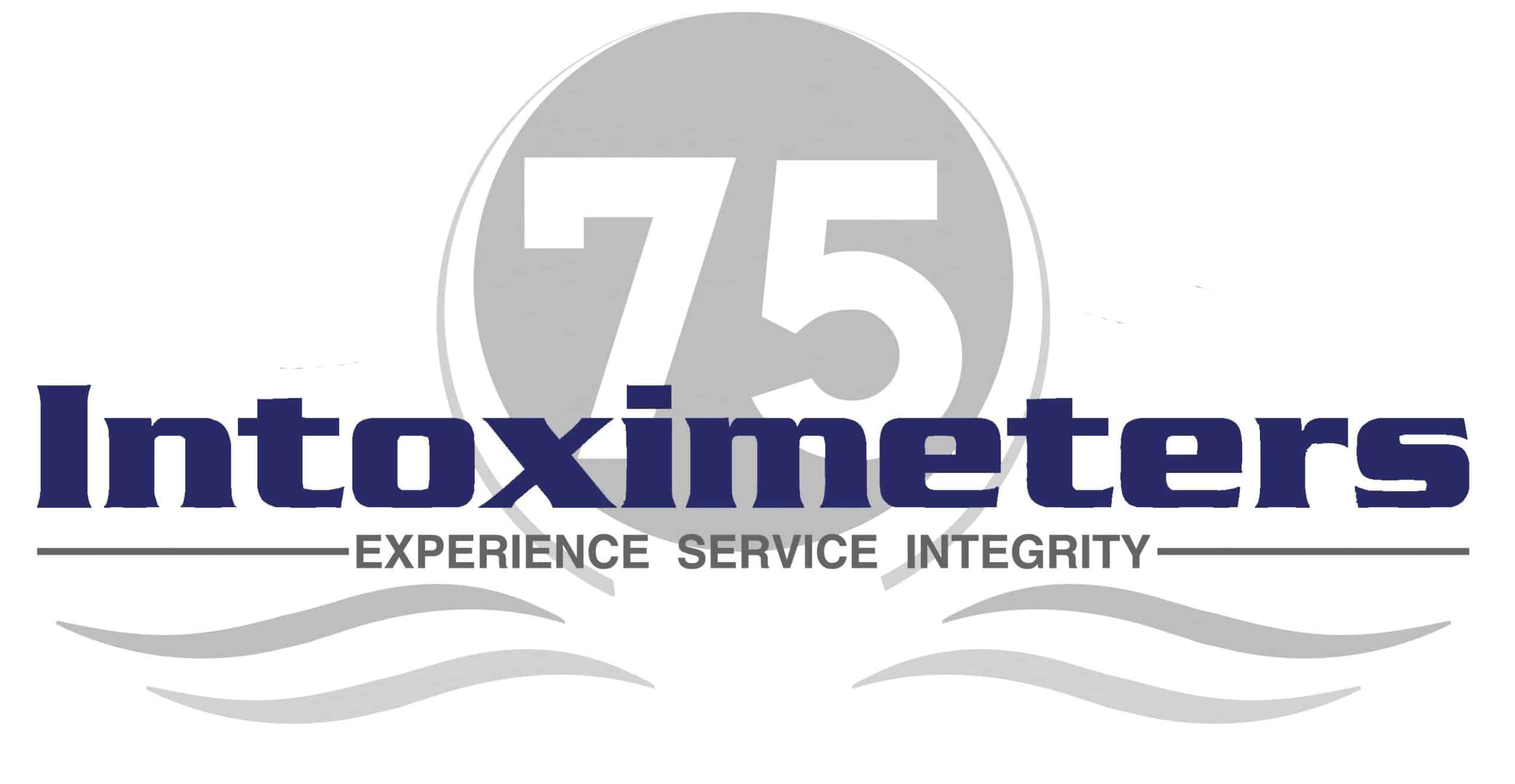About Intoximeters®
Industry leaders since 1945.
Intoximeters, Inc. is a privately held company headquartered in St. Louis, Missouri USA with a subsidiary office in Totnes, Devon UK. Intoximeters produces and markets a full line of alcohol breath testing instruments. Our team’s expertise and experience is second to none.
Since 1945, Intoximeters has been a leader in the breath alcohol detection field. Early on, law enforcement, probations and correction agencies were the primary customers for this type of equipment. However, as the extent of alcohol abuse in society became more recognized, other markets for breath alcohol testing products developed – most notably in the industrial occupational health sector.
Although initially driven by federal mandates, the costs associated with alcohol abuse in the workplace have encouraged more and more employers to institute alcohol and drug testing on their own to reduce absenteeism, workers compensation costs, accident insurance costs and to improve overall safety in the workplace. Intoximeters’ products, designed for use in law enforcement environments, have been easily adapted for a wide range of industrial applications.
Intoximeters has fully utilized advances in both sensor and data processing technologies. Today, there are a wide variety of mandated testing protocols at the local, state and federal levels, many with strict reporting requirements. Intoximeters has responded to this market need by developing a complete line of instruments with advanced data processing and communications capabilities.
Intoximeters, Inc. also provides comprehensive customer support by offering training courses in the operation and maintenance of each of its instruments and associated software products.
A Brief History of Intoximeters
1937
1937-1941
1945
1946
Dr. Forrester participated in introducing chemical tests in the State of Michigan, as a law enforcement aid to curb drunk driving. The program was directed by Dr. LeMoyne Snyder, Medicolegal Director of the Michigan State Police. Dr. C.W. Muehlberger, Toxicologist of the Crime Detection Lab of the Michigan Department of Health, contributed generously his scientific expertise and experience with chemical tests for alcohol. The Attorney General’s office advised on legal matters, and Captain C.J. Scavarda, in charge of Traffic and Safety, was invaluable in translating the program into a practicable standard procedure.
Mid to Late 1950’s
The Photo-Electric Intoximeter (registered originally by Dr. Forrester) used deep lung breath of a fixed volume and pre-packaged chemicals in conjunction with photo-electric measurements to determine blood alcohol concentration.
In the 1970’s
Intoximeters brought to market a flame ionization Gas Chromatograph (GCI MKII and MKIV). These instruments could directly sample a subject’s breath or they could analyze a breath sample collected at another location using the Indium Encapsulation System. These indium tubes captured three separate samples of a breath specimen. The collected samples would be preserved until they could be presented to the GC for analysis.
Mid 1970’s
Intoximeters introduces the first of the Alco-Sensor line of handheld breath alcohol analyzers. This line of handheld fuel cell instruments is the most prolific line of evidential grade alcohol breath test instruments made to date.
Late 1970’s
Intoximeters introduces the first evidential fuel cell based instrument. The “Auto Intoximeter” (Auto I)
1980’s
1981 – IR 3000 is offered with a dual sensor system including a tin oxide sensor. This device was used to identify compounds that could be found in the human breath and might interfere with the infrared analysis.
1983 – IR 3000 is offered with a fuel cell as a second sensor. This device is the first dual analytical fuel cell infrared analyzer commercially available for evidential breath testing.
1983 – The IR 3000 used in Alaska is offered as an evidential breath test system that utilizes a dry gas standard for performing periodic accuracy checks
1990
Intoximeters implements a patented analysis technique in the Alco-Sensor IV where the fuel cell signal is integrated, and this integration is used in the determination of the alcohol concentration. This technique proves to be a benchmark improvement in fuel cell analysis in that it overcomes the “slumping” effect that is evident in systems that use a pure “peak” or rate of reaction analysis. This patent allows the Intoximeters’ fuel cell instruments which employ this technique to offer accuracy and repeatability on par with the desktop evidential systems.
1993
Intoximeters introduces the Intox EC/IR. This instrument sets the standard for bench top, fuel cell based evidential systems. With its use in several US states as the primary evidential testing system and its approval and use in the UK for drink drive enforcement, the EC/IR offers features and an ease of maintenance that make it an attractive alternative to infrared based analyzers.
1994-95
The US Department of Transportation mandates workplace alcohol testing for safety sensitive positions that fall under the DOT jurisdiction. This group includes truck drivers, pilots, train conductors and ship captains, to name a few. To meet the needs of this market, a suite of products (using existing or new platforms) was introduced:
- Alco-Sensor IV /RBTIV
- Alco-Sensor IV with memory and serial printer
- Alco-Sensor IV with Alco Sensor IV Utility
- Alcomonitor CC
- Intox EC/IR
1997
Intoximeters places more than 300 Intox EC/IR instruments in UK police constabularies. To support a growing sales demand in Europe, an office in the UK is opened to offer both marketing and after sales support for Intoximeters products.
2000
Intoximeters introduces its first @Point of Arrest system:
Point of Arrest testing is a response to the “rising blood alcohol” contention which is a common defense used to challenge breath test results in court. Roadside evidential testing systems, such as the Alco-Sensor IV XL @Point of Arrest system, are one solution to eliminate this concern.
2004
Intoximeters introduces the Intox EC/IR II and Alco-Sensor FST:
The EC/IR II, the replacement for the benchtop EC/IR in the Intoximeters product line is introduced to the market and selected for use in statewide programs in West Virginia and Tennessee.The Alco-Sensor FST is the latest instrument in the Alco-Sensor Product Line that offers automated sampling at a low cost. The Alco-Sensor FST offers integral design features that are aimed at enhancing operator safety during its use.
2010
Intoximeters introduces the Alco-Sensor V line.
The Alco-Sensor V line of products offers a range of configurations; from a standalone handheld instrument (ASV), to a handheld instrument with print capabilities (ASV and printer) to full systems (RBTV and Alco-Sensor V @Point of Arrest system) with data input and print capabilities.
2012
Intoximeters achieves ISO 17025:2005 Calibration Laboratory Accreditation from the American Association for Laboratory Accreditation (A2LA) in the field of calibration services for breath alcohol instruments.
2013
Datamaster DMT Acquisition – Intoximeters acquires National Patent Analytical Systems’ breath alcohol testing business.
2019
Intoximeters and Abbott partner to offer law enforcement quality, combined technology for roadside drug and alcohol testing. SoToxaTM Mobile Test System is manufactured by Abbott, and Intoximeters is the exclusive distributor for U.S. Law Enforcement. SoToxa is the first handheld, instrumented, oral fluid drug screener designed for roadside testing.
More About Intoximeters and the History of Breath Alcohol Testing
Intoximeters is the oldest active breath alcohol instrument manufacturer in the world.
The first breath alcohol testing instrument (The Drunkometer) was developed by Dr. Rolla N. Harger in 1938. In 1941, the Portable Intoximeter was invented by Dr. Glenn C. Forrester. This device was closely followed by the Alcometer, which was invented by Professor Leon Greenberg.
All of the breath collection devices were designed to measure breath alcohol concentrations that were related back to blood alcohol concentrations.
In 1954, Robert Borkenstein, an officer with the Indiana State Police, invented the Breathalyzer.
Breathalyzer breath testing instruments were originally manufactured and sold by the Stevenson Chemical Corporation of Red Bank, New Jersey. The rights to such instruments were subsequently acquired by the Smith and Wesson Electronics Company of Springfield, Massachusetts, which manufactured and through its mature law enforcement distribution channel successfully sold the Breathalyzer until 1984. Due to this success, “Breathalyzer” earned the most recognized name in the industry.
In 1959, Mac Forrester took the helm at Intoximeters, Inc. from his father (Dr. Glenn C. Forrester). Breath alcohol testing instrumentation was a fledgling industry and Intoximeters competed directly with the Breathalyzer with its Photo Electronic Intoximeters (PEI).
Unlike his father, who was more of a scientist than businessman, Mac was prepared to use both his science background and his Harvard business school training to build a business that would lead the breath test instrument industry for the next six decades.
Mac drove innovation in the industry. He was responsible for developing:
- The first Gas Chromatograph breath alcohol analyzer (GCI),
- The first evidential fuel cell based instrument; the Auto-Intoximeter (Auto I),
- The first infrared based breath alcohol instrument with an integrated computer for data entry (Intoximeter IR3000),
- The first instrument with fuel cell and infrared based analytical technologies combined (IR3000DFC),
- The premier line of handheld instruments, The Alco-Sensor line, which enhanced Tom Jones’ work on the Lion Labs Alcometer with the engineering expertise of Karl Wolf Sr. Not only did these improvements make the original instruments more robust and allowed the fuel cell based Preliminary Breath Testers to become the standard in the market, the work of Mac Forrester and Karl Wolf Sr. led to the development of fuel cell based instruments that produced highly accurate evidential grade results.
- The market for dry gas calibration systems.
At the time of Mac’s death (April, 2016), Intoximeters, Inc. was recognized as the most successful breath alcohol detection instrument manufacturer and marketer in North America; if not the world. This success is largely due to Mac’s leadership, vision and relentless work ethic.
Today, under M Rankine Forrester’s leadership, the company continues to build world class breath alcohol testing instrumentation while it is also expanding into other markets. Most recently, Intoximeters, Inc. is levering its sales channel to develop the oral fluid, drug testing screener market; exclusively distributing Abbott Labs SOTOXA roadside drug testing system.


1st image: Mac Forrester
2nd image: Harger, Glenn Forrester and Borkenstein
